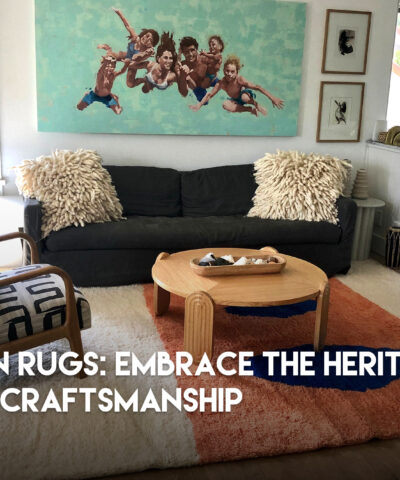Category: Rag Rugs
Discover the Unique Charm of Moroccan Rag Rugs
Welcome to WEBERBER, your ultimate destination for authentic Moroccan rugs. Today, we are excited to introduce you to one of the most unique and captivating types of Moroccan rugs: the Rag Rug. Uncover the rich history, intricate craftsmanship, and unparalleled beauty that make these rugs a cherished addition to any home.
What Are Moroccan Rag Rugs?
Moroccan rag rugs, also known as Boucherouite rugs, are handmade textiles crafted from recycled fabrics. These vibrant, eclectic rugs embody the ingenuity and creativity of Moroccan artisans. Unlike traditional wool rugs, rag rugs are often made from discarded clothing and textiles, repurposed into stunning works of art. Each rug is, therefore, a unique creation, showcasing an array of colors, patterns, and textures.
The History of Moroccan Rag Rugs
The origins of Moroccan rag rugs can be traced back to the Berber tribes of Morocco. For centuries, Berber women have been weaving rugs for functional use, such as floor coverings, bedding, and even saddle blankets. The tradition of rag rug weaving emerged as a resourceful way to use leftover materials. This practice not only conserves resources but also turns everyday textiles into extraordinary pieces of art.
Rag rug weaving gained popularity in the mid-20th century as Moroccan society underwent modernization. As consumer goods became more widespread, the availability of discarded textiles increased, leading to more diverse and colorful rag rugs. This evolution transformed the rugs into contemporary masterpieces that attract global appreciation.
Types of Moroccan Rag Rugs
Moroccan rag rugs come in various styles, each with its own distinctive characteristics:
Boucherouite Rugs: The most well-known type, these rugs are celebrated for their explosion of colors and abstract patterns. The term “Boucherouite” means “scrap” or “rag” in Moroccan Arabic, reflecting the materials used.
Azilal Rag Rugs: Originating from the Azilal region, these rugs often feature bold colors and intricate patterns, incorporating various textile scraps and fragments.
The Art of Crafting a Moroccan Rag Rug
The process of creating a Moroccan rag rug is an intricate art that involves several steps:
Material Collection: Artisans gather a diverse range of textiles, including cotton, nylon, polyester, and wool. These materials are often sourced from old clothing, bed linens, and other fabric remnants.
Preparation: The collected fabrics are cleaned and cut into strips. Each strip is then sorted by color and texture to ensure a harmonious composition in the final rug.
Weaving: Using a traditional loom, the weaver meticulously intertwines the fabric strips, creating intricate patterns and designs. This process requires exceptional skill and attention to detail, as even a single error can disrupt the rug’s overall design.
Finishing Touches: Once the weaving is complete, the rug undergoes finishing touches, such as trimming loose threads and securing edges. This ensures the rug is durable and ready for use.
Why Choose a Moroccan Rag Rug?
Moroccan rag rugs offer a multitude of benefits that make them a valuable addition to any space:
Eco-Friendly: By repurposing discarded textiles, rag rugs contribute to environmental sustainability and reduce waste.
Unique Designs: Each rug is a one-of-a-kind piece, with unique color combinations and patterns that add personality and charm to any room.
Versatility: Rag rugs come in various sizes and styles, making them suitable for different spaces, from living rooms and bedrooms to hallways and kitchens.
Artisan Craftsmanship: These rugs are handcrafted by skilled Moroccan artisans, ensuring exceptional quality and authenticity.
Affordability: Compared to traditional wool rugs, rag rugs are often more affordable, making them accessible to a wider audience.
How to Incorporate Moroccan Rag Rugs into Your Home
Integrating a Moroccan rag rug into your home decor can transform any space into a vibrant and inviting environment. Here are some ideas on how to use these unique rugs:
Living Room: Place a colorful rag rug in the center of your living room to create a focal point and add warmth to the space.
Bedroom: Use a rag rug as a bedside accent to introduce a burst of color and texture to your bedroom.
Hallway: A long, narrow rag rug can add character and brightness to a hallway or entryway.
Kitchen: Enhance your kitchen with a small rag rug that adds both comfort and style underfoot.
Wall Hanging: Consider using a particularly striking rag rug as a wall hanging to create a unique and artistic display.
Caring for Your Moroccan Rag Rug
Proper care and maintenance will ensure your Moroccan rag rug remains beautiful and functional for years to come:
Regular Cleaning: Vacuum the rug regularly to remove dust and debris. For deeper cleaning, gently shake the rug outside.
Spot Cleaning: Handle spills and stains promptly by blotting the affected area with a damp cloth and mild detergent.
Avoid Sunlight: Prolonged exposure to direct sunlight can cause colors to fade. Place the rug in an area with indirect sunlight to preserve its vibrancy.
Professional Cleaning: For a thorough cleaning, consider taking the rug to a professional cleaner who specializes in delicate fabrics.
Where to Buy Authentic Moroccan Rag Rugs
If you’re ready to add a Moroccan rag rug to your collection, look no further than Moroccan-Carpet.com. We offer a wide selection of authentic rag rugs, each made by skilled Moroccan artisans. Our commitment to quality ensures you receive a rug that is not only beautiful but also durable and ethically sourced.
Browse our collection today to find the perfect Moroccan rag rug that will add a touch of bohemian elegance to your home.
Conclusion
Moroccan rag rugs are more than just floor coverings; they are pieces of art that reflect the rich cultural heritage and resourcefulness of Moroccan artisans. With their vibrant colors, unique designs, and eco-friendly nature, these rugs are an exceptional addition to any home. Explore our exquisite collection at WEBERBER and bring a piece of Moroccan artistry into your living space.





